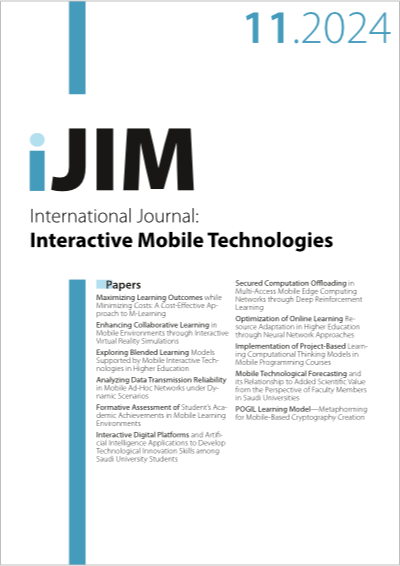Exploring Blended Learning Models Supported by Mobile Interactive Technologies in Higher Education
DOI:
https://doi.org/10.3991/ijim.v18i11.49777Keywords:
blended learning, mobile interactive technology, emotional analysis, teaching interaction, higher educationAbstract
With the widespread adoption of mobile interactive technologies and the evolving landscape of higher education, blended learning models have increasingly become a focus of educational reform. These models integrate traditional face-to-face teaching with modern online learning approaches, enhancing learning flexibility and interactivity through mobile technologies. Although blended learning has shown significant advantages in enhancing teaching efficiency and meeting individual student needs, research on its impact on student emotional interaction remains relatively limited. Emotional factors play a crucial role in the learning process, affecting student motivation and outcomes. Current research on emotional interactions in blended learning primarily relies on traditional methods, such as surveys, which frequently do not offer real-time and precise emotional data. Therefore, this paper aims to explore the effective selection of emotional sensing nodes and the accurate extraction of emotional features through mobile interactive technology-supported blended learning. The findings of this study aim to enhance the quality of teaching interactions but also to provide theoretical and practical support for optimizing blended learning models.
Downloads
Published
How to Cite
Issue
Section
License
Copyright (c) 2024 Nan Zhang (Submitter); Fang Chen

This work is licensed under a Creative Commons Attribution 4.0 International License.



